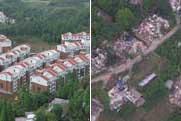China
Backgrounder: Cebu, venue of 12th ASEAN Summit
Source: Xinhuanet | 12-07-2006 08:25
CEBU, Philippines, Dec. 6 (Xinhua) -- Sixteen world leaders, 10 from the Association of Southeast Asian Nations (ASEAN) and six from ASEAN's dialogue partners, will attend the 12th ASEAN summit to be held here from Dec. 6 to 14.
Founded in 1565 with the Spanish colonial rule, Cebu City is the oldest city in the Philippines and now the capital of Cebu Province as well as the Central Visayas Region. In addition to Cebu City proper, the Cebu metropolitan area, known as Metro Cebu today, includes 12 surrounding cities and municipalities.
 |
Portuguese navigator Ferdinand Magellan was the first European to visit the area when he arrived in 1521. Native warriors of Mactan killed Magellan in the same year to resist invasion. Spanish colonizers founded the city in 1565 and made it their capital until 1571, when the administration decided to transfer the capital to the north.
Mainly located along the central eastern portion of the Cebu Island, Metro Cebu is the second largest officially defined metropolitan area in the Philippines after Metro Manila, or the National Capital Region. The smaller nearby island of Mactan, famous for an international airport and beach resorts, has also been integrated into Metro Cebu, since two steel bridges were built as links successively.
There are some 1.9 million people living in Metro Cebu, an area with nearly 1,000 square kilometers. The area's primary and traditional industry is shipping, which consists of trade with domestic and foreign ports.
Taking advantage of the natural harbor and its improved infrastructure, the government has been promoting Cebu as a business and logistic hub of the central Philippines. Tourism and retailing are two of the most booming industries of Metro Cebu in recent years. Among other local products are processed food, textiles, chemicals, and rattan furniture.
The Metropolitan Cebu Development Council, composed of the provincial governor of Cebu and local mayors, is mandated to address development concerns affecting the area, although it lacks legal and institutional powers and resources like the Metropolitan Manila Development Authority.
Editor:Du Xiaodan



